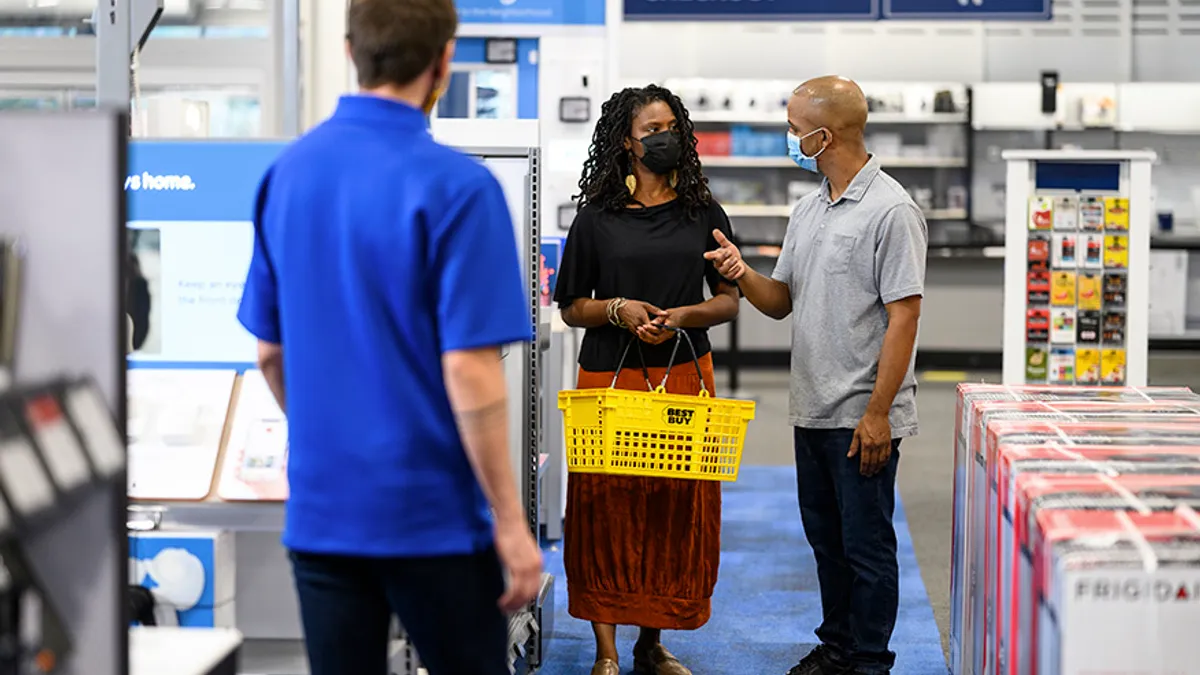NEW YORK — Inclusive marketing helped improve the performance of Best Buy’s annual esports and gaming campaign, said Dan Murphy, senior manager of media strategy at the tech retailer, during a panel discussion at Advertising Week.
Murphy pointed to the 60% higher completion and viewing rate of social media advertising videos compared to years prior, saying consumers were responding to the inclusive and diverse images they were seeing.
“When we are offering up great, unique messages along with great content, we are seeing that consumers are sticking around and viewing that content and making an impact,” Murphy said.
Murphy was joined by Lisa Torres, president of Cultural Quotient at Publicis Media, and Rishi Chadha, global head of creator and gaming content partnerships at Twitter, on the Wednesday panel. The group discussed why the campaign was so impactful with young viewers, along with the importance of shifting measurement parameters to fit the new consumer. Twitter, which presented the panel, also discussed how the campaign utilized Twitter Amplify, a product that pairs brands with premium and timely publisher videos, to reach audiences.
Updating engagement
As the world grappled with how to address systemic racism and inequality in the wake of 2020’s protests, many businesses pledged funding to both internal and external efforts aimed at increasing recognition of marginalized groups. In 2021, Best Buy announced it would dedicate $1.2 billion to minority businesses and increase the diversity of the tech industry by 2025. So far, the company is over 40% of the way to its goal, according to Murphy. At the corporate level, 60% of the most senior leaders at Best Buy are women or people of color.
“In order to understand the customer, we need to understand who they are, what’s important to them, what they value and how we can make a true connection with them,” Murphy said.
Best Buy’s success reflects the evolving nature of the consumer, especially among those who are a part of Gen Z or even younger. As companies reckon with how to reach new groups, it’s important to reorganize how things are measured and start redefining what success looks like, according to Publicis’s Torres.
“Acknowledge the fact that this consumer is going to drive your business from this day forward,” Torres said. “If you just figure out that this consumer, this BIPOC [Black, Indigenous and people of color] consumer, this different consumer from what we’ve seen in other generations that you’ve targeted to is actually going to drive your business moving forward, I think that will innately help you make your decisions… will help drive you into a different direction.”
Businesses should be more focused on long-term benefits, not only short-term profits, according to Torres. She pointed to the work being done by Publicis’s Once and For All Coalition, which is intended to help build a more equitable ad system, in terms of measurements to help reposition advertising metrics for a younger audience. She said that if clients and vendors cannot rework measurement systems, the industry will see “anemic growth” in the future. Best Buy, who is a member of the coalition, worked with Twitter on utilizing unique assets to increase engagement and target appropriate communities.
Metrics have always been extremely important in advertising, and their importance has only grown as alternative advertising channels such as connected TV and social media rise in popularity and profitability. However, the traditional measurement structure is not built for long-term results, said Torres. She pointed out that platforms like Twitter are focused on engagement, which is a good short-term metric but isn’t indicative of long-term payoff. Best Buy’s advertising evolution could be indicative of what a good, long-term social strategy can look like, especially as the purchasing power of Gen Z grows.
“We are at the changing point,” Torres said. “This is not the same audience that marketers are used to talking to. So, they need to figure out a new way of talking.”















